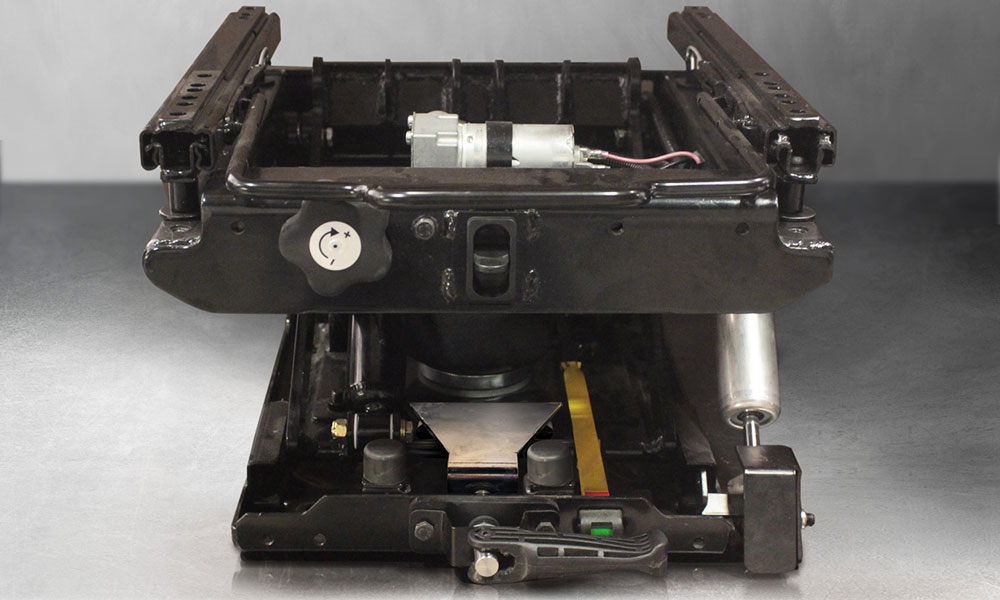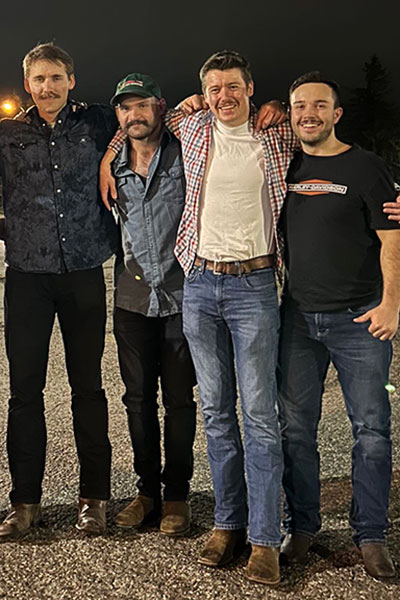Capstone project a win-win for grads and industry partner
Those who sit for a living know the toll it can take on the body. Only the most ergonomic office chair will prevent aches in the shoulders, back and hips.
But imagine how much harder it is to approach pain-free sitting when that chair isn’t stationary at a desk but bolted in front of the controls of an excavator bouncing over rough terrain all day.
Operators of heavy machinery “have higher rates of musculoskeletal injuries than non-operators,” explain the authors of a research paper by one Edmonton-based wellness consulting company. Awkward postures, jarring and vibration wear on muscles, bones, joints and more.
But there are solutions, the authors point out, that can prevent injuries that may get in the way of roads being built, minerals mined, and the world carrying on as needed. One is cushioning suspension; the other is improved ergonomics.
Both have been objectives of the Ultra Seat Corporation for more than 30 years. But when the Acheson-based company recently recognized an obstacle to combining them in a particular model, they decided to let a group of NAIT students take the first shot at overcoming it.
What came back wasn’t what Ultra Seat expected, which was a plan likely to be filed away as a solid effort and a unique student learning experience, but probably not quite what they were looking for. What they got instead was an award-winning idea that allowed them to roll out – in less than a year – a new, saleable product line.
“A great partnership”

The relationship between Ultra Seat and NAIT goes back nearly a decade, with the company issuing design challenges as Mechanical Engineering Technology capstone projects, which students complete for a client outside the program.
“It’s just a great partnership,” says Eric Krysa, president of Ultra Seat. For him, it’s an opportunity to support a program from which he has sometimes hired.
“We’re not out there to get free design work,” he says. “We’re out there to try to give students experience.”
In this case, Krysa did both. There are two main types of suspension in heavy equipment seats: air and mechanical. The difference is like “sitting on a waterbed versus sitting on a box spring,” says Krysa.
Another difference was that, while Ultra Seat’s mechanical model could be adjusted for the operator’s height, the air model could not – at least not before the problem was tackled by a team of now-grads (Mechanical Engineering Technology '21) made up of Wade Ellett (Heavy Equipment Technician '19), Trent Murray, Matthias van Nieuwenhuyze (Engineering Design & Drafting Technology '16) and Benjamin Robb.
After befriending each other in labs, the four students chose the project on account of having a collective familiarity with heavy equipment through past studies and experience.
“We all agreed it would be something that we probably could excel at,” says van Nieuwenhuyze. Working on a real problem for a local company also appealed to them.
“We definitely did a bit of trial and error.”
None of this is to say they had any deep understanding of the issue at hand. “We definitely did a bit of trial and error,” says van Nieuwenhuyze.
That’s what instructor Scott Sparling (Mechanical Engineering Technology ’94) expected. “We can't teach students everything in two years, but they do have enough that they can start researching to figure out how to complete a task,” he says.
With a seat donated by the company to work on, the group devised a way to overcome the primary challenge of pressure changes in the airbag as it was lifted and lowered, preventing drivers from “bottoming out” over bumps. They delivered their solution in April 2022.
“It was designed very well,” says Krysa.
So well, in fact, that, with a few tweaks made in house, the company’s height-adjustable air suspension seat is already being sold, and making the hazards of operating heavy machinery easier on muscles, bones and joints around the world.
Keeping the group together
 That the seat went into production so quickly was a surprise for van Nieuwenhuyze and the team – and not the only one their project would bring them.
That the seat went into production so quickly was a surprise for van Nieuwenhuyze and the team – and not the only one their project would bring them.
Later that fall, they learned that they’d won Technology Accreditation Canada’s Technology Report Contest, beating teams from technical institutes from across Canada.
For Sparling, the win represents steady progression for his program, from placing fifth in the contest a few years ago, to second in 2021, to first with the Ultra Seat project.
“NAIT can compete across Canada and can represent as one of the best [technical institutes] in this country,” he says.
But, to the credit of the team, Sparling adds, “they were an exceptionally good group of students.”
Since the win, none of the four have paused to sit on laurels, air-cushioned or otherwise. Each of them have chosen to build on their NAIT educations by transferring to Lakehead University, in Thunder Bay, to add mechanical engineering degrees to their diplomas.
The award was never a goal anyway, says van Nieuwenhuyze; they simply wanted to use what they’d learned to deliver the best possible design for their client. Considering it now, however, he sees the win as validation of the decision to pack up and move across the country.
It’s an opportunity to learn more and to continue to test and develop the skills of the team as they collaborate on new projects.
“We're keeping the group together,” says van Nieuwenhuyze, “and it's been going great.”
Banner image by kali9/istockphoto.com